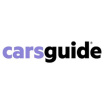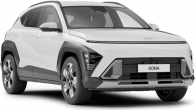When Porsche uncorked the Cayenne it promised it would pop to the top of the four-wheel-drive world.
It hasn't worked that way. Sales are good-ish in Australia, and have doubled the numbers at the company's local division, but it hasn't been a total breakthrough.
The arrival of the look-alike and drive-alike Volkswagen Touareg, as well as a massive lineup of potential luxury rivals, has made things tough for Porsche.
In short, it hasn't been a champagne spray.
And we also found the fizz had turned flat when we tasted a Cayenne V8 for the first time last year.
Things are different this time, as we're looking at the Cayenne Turbo and the car has been snitched from PCA boss Michael Winkler for the drive.
He says there has been no special tweaking, but confesses the car is a lot better than the squeaky Cayenne S we lumped to Bathurst last October.
The promise of the car is reflected in everything from its twin-turbo V8 engine to the hi-tech air suspension, electronic assistance package, fully loaded cabin and price tag soaring beyond $200,000.
But, most important of all, are three words from Winkler:
¿Remember the 928.¿
That won't mean a lot to younger fans, but the 928 was Porsche's first trip into the world of V8-powered family cars.
It was built in the 1980s before the four-wheel-drive boom, but anyone who has driven a 928 will remember the machined-from-solid feel, easy driving and V8 thump.
We felt exactly those strengths in the first few kilometres with the spacious Cayenne Turbo.
It's an impressive machine, starting with the twin-turbo V8 and its all-wheel drive system and electronic air suspension.
Porsche says it has liberated an easy 331kW of power and 620Nm of torque from the hi-tech alloy engine, and that it's more than enough for a 0-100km/h sprint in 5.6 seconds, and a top whack of 265km/h.
The car comes with everything from satellite navigation and a super-classy CD system to alcantara leather, electric sports seats, a multi-function steering wheel, DVD entertainment for the rear seats, a tiptronic six-speed automatic with switches on the wheel, and a sunroof.
Even so, there are lots of rivals with smaller price tags and badges that are just as impressive as the Cayenne.
Mercedes has the raunchy but rowdy ML55, the Range Rover is great if you can afford the fuel, the Lexus LX470 is still the off-road king, and the BMW X5 with 4.6-litre V8 is still our favourite, and undercuts the Cayenne with a starting price of $152,300.
Still, the Cayenne Turbo is the king of the quicks and a stop – or two – beyond the reach of the clone-car VW Touareg which shares so much of its engineering and equipment.
Porsche Cars Australia's recent decision to reject a V6 Cayenne in favour of a proper prestige attack has protected that position and given the brand a better chance to continue its early sales success.
ON THE ROAD
Our first run with the Cayenne, last October, was not good.
We only got two blocks from the Sydney dealer before it started squeaking and rattling.
We were appalled that a car as costly as the Cayenne could feel so crappy.
It bounced and jiggled over Sydney's broken bitumen, but the cornering grip through the twisty bits to Bathurst provided plenty of compensation.
The first few kilometres in the Cayenne Turbo were a total contrast. It felt tight, eager and well-balanced.
It was a lot like a 928, at least to someone who had driven one before, and still has it on a ¿classic garage¿ shopping list.
And colleague James Stanford had already given his approval to the Cayenne Turbo's potential as an Outback rally machine after some sideways sprinting near Alice Springs in 2003.
 |
| The Porsche Cayenne: Didn't convert us. |
It only needed a tickle on the throttle to move with the traffic, while a full-on attack from the lights was rewarded with a thundering growl and a slingshot start.
We have no doubt, despite the Cayenne's size and two-tonne-plus heft, that it could continue to hunt all the way to the claimed top speed.
It handled corners easily, the six-speed automatic was smooth and discreet, and the steering feel was good.
There was some movement in the front suspension, and even the air shocks couldn't give it the hunkered-down feel you would expect in a 911 or Boxster, but it was certainly more like a Porsche than a Proton.
We also enjoyed the roomy back seat and boot – all the luxury you usually get in a top-line BMW or Benz – and the easygoing cruising ability.
But it was tough to park, it was a little too keen on fuel during our test – though Stanford reported 10 litres/100km from the Geelong freeway – and it never felt as sporty as we would have liked.
If you consider the Cayenne as a full-sized Porsche family car, and you have the dollars to put one in the drive, it is the closest thing to a born-again 928.
And we know from experience that it can – if you can handle the scratches and dirt – tackle tough off-road conditions.
But we still don't think the Cayenne is as good as it should be, or that it is as far ahead of the Touareg as Porsche buyers have every right to demand.
Did we get it wrong on the first run through the Cayenne? No.
Have we been converted by a week with the Cayenne Turbo? No. But we now have a much better understanding of what Porsche was really trying to do with the Cayenne, and we can now appreciate its many strengths without being overwhelmed by its weaknesses.
Porsche Cayenne 2004: Turbo
| Engine Type | Turbo V8, 4.5L |
|---|---|
| Fuel Type | Premium Unleaded Petrol |
| Fuel Efficiency | 15.7L/100km (combined) |
| Seating | 5 |
| Price From | $15,950 - $20,460 |












.png)









.jpg)

